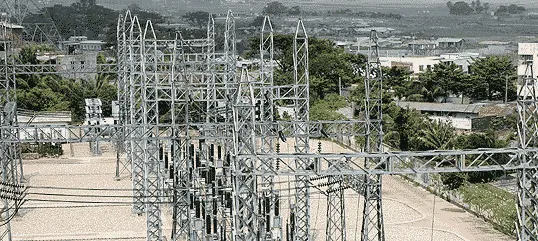
ABB boosts efficiency in Bangladesh power grid
ABB’s turnkey shunt compensation system improved the efficiency, reliability and quality of power supplies in the Bangladesh power grid.
The system improved the power factor of the Bangladesh national grid by 11 percent. It enabled an additional 34 megawatts of electricity to reach Bangladesh customers—all with a payback time of 18 months.
Having analyzed the various technical options, from a number of vendors, PGCB opted for a reactive power compensation solution from ABB. The project was completed in March 2010 and within months the power factor had risen from 0.88 to 0.98 and voltage had gone up by 3 - 5 kV.
The optimal power factor in an electricity system is 1.0, so moving from 0.88 to 0.98 is a significant achievement. Raising the voltage of the system reduces losses and improves the rate at which power can be delivered to end users. In a 132 kV system, a change of 3-5 kV will make quite a difference.
The combined improvements in power factor and voltage delivered by ABB’s solution brought the equivalent of 34 MW of extra power into the grid, without needing to build any additional generation capacity. The ability to deliver this much additional power has significantly improved PGCB’s revenues.
The payback period for PGCB’s investment is estimated to be 18 months.
The system is part of ABB's family of flexible AC transmission system technologies, comprising a 450 megavolt ampere reactive capacitor bank and high-voltage power equipment such as circuit breakers, disconnectors and instrument transformers, for each of the eight critical substations.
The Power Grid Company of Bangladesh selected ABB’s solution to improve the performance of its 132 kV transmission grid, parts of which were suffering losses because of voltage drops and poor power quality. The new equipment was installed in the eight PGCB substations where losses were greatest and power flows most critical.
The project is the first of its kind in Bangladesh’s national grid and successfully resolved a number of challenges. These included installing new equipment into the confined space of PGCB’s existing substations, each of which had a unique design and had been supplied by a different vendor and at different times.
The cost of the solution is a fraction - less than 15 percent - of the capital that would have been required to build a conventional fossil fuel power plant to produce this much power.
Additionally, because the ABB system recovers lost energy rather than generating new ones, there are no continuous operating costs and no greenhouse gas emissions.








![Cross Domain [Manu + SBR + ABF + ABR + FMCG + HBR + ]](https://cmg-qa.s3.ap-southeast-1.amazonaws.com/s3fs-public/styles/exclusive_featured_article/public/2025-01/earth-3537401_1920_4.jpg.webp?itok=WaRpTJwE)
![Cross Domain [SBR + ABR]](https://cmg-qa.s3.ap-southeast-1.amazonaws.com/s3fs-public/styles/exclusive_featured_article/public/2025-01/pexels-jahoo-867092-2_1.jpg.webp?itok=o7MUL1oO)









 Advertise
Advertise


